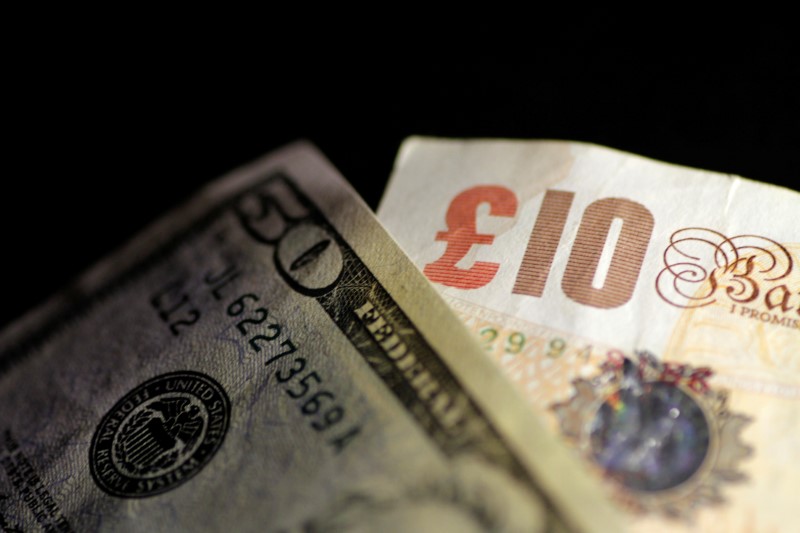 © Reuters.
© Reuters.
Investing.com - The U.S. dollar fell sharply in early European trade Thursday after comments from Fed Chair Jerome Powell pointed to a likely peak in U.S. interest rates.
At 04:10 ET (08:10 GMT), the Dollar Index, which tracks the greenback against a basket of six other currencies, traded 0.4% lower at 106.290, extending overnight losses.
Have Fed rates peaked?
The U.S. Federal Reserve left rates unchanged on Wednesday, as expected, and while Chair Jerome Powell left the door open for another rate hike he struck a less hawkish tone than markets were expecting, by acknowledging that monetary conditions had tightened substantially in recent months.
Traders have taken his comments as a sign that the Fed is likely done with its run of rate hikes, and was likely to cut rates by mid-2024.
Ten-year Treasury yields are down 20 basis points from Wednesday's highs, having previously climbed to levels last seen in 2007, and this has hit the dollar hard.
“With Treasury yields staying at elevated levels, the need for further policy rate hikes is dramatically reduced and we do not expect any further Fed rate hikes,” said analysts at ING, in a note.
BOE faces difficult balancing act
Attention now turns to the Bank of England, which holds its latest policy-setting meeting later in the session.
GBP/USD rose 0.1% to 1.2168, benefiting from the weak dollar, with the central bank widely expected to follow the European Central Bank and the Fed in keeping its base rate unchanged at its 15-year high.
The U.K. inflation rate has fallen from the high of 11.1% in October 2022 to 6.7% in September, but this still remains more than three times its target.
That said, the BOE also has to take in growing signs of strain in the economy, and thus faces a tricky balancing act of tackling still elevated prices without sending the country into recession.
Euro gains ahead of manufacturing PMI data
EUR/USD rose 0.3% to 1.0602, again helped by the weak dollar, ahead of the release of German unemployment data for October, as well as manufacturing PMI numbers for the eurozone as a whole.
These numbers are expected to show the German economy, the eurozone’s largest, remains in a weak state.
That said, ECB policymaker Joachim Nagel said on Tuesday that the European Central Bank must keep interest rates sufficiently high for long enough because inflation in the euro zone has not been conquered despite a significant fall in the past year.
{{3|USD/JPY}} still above 150
Elsewhere, USD/JPY fell 0.3% to 150.49, with the yen recovering sharply from a one-year low as government officials continued to threaten intervention in currency markets.
But the pair was still above the widely-watched 150 level, having logged steep losses this week following dovish signals from the Bank of Japan.
USD/CNY edged higher to 7.3192, with the yuan receiving little help from the dollar weakness as a string of weak economic readings from the country kept investors at bay.
AUD/USD rose 0.5% to 0.6420, with traders growing increasingly confident that the Reserve Bank of Australia will raise interest rates when it meets next week.

